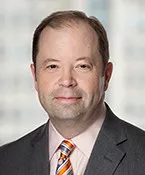February 5, 2015
How important is talent when it comes to success?
Our efforts to create excellence in students are inextricably linked to our beliefs about what constitutes talent. Daniel Coyle, author of The Talent Code, advances that to help students achieve excellence we must thoughtfully explore “that space—the gap that separates regular performance people and ‘talented’ people.” He notes that “we are told stories about that space, by parents, movies, and books. We are told that [some] babies are born with gifts [of greatness] in them.” But only a few receive such gifts. Similarly, in Outliers, Malcolm Gladwell notes that “there is a story usually told about extremely successful people, a story that focuses on intelligence and ambition” but that “the true story of success is very different.” If we are to lead students to be successful, we must know the true story of success.
Geoff Colvin picks up the theme in Talent is Overrated when he notes that popular belief holds that Mozart was a musical prodigy, uniquely gifted from a young age. Was he? Tiger Woods was “destined” from birth to be great in golf. Or did he simply have a series of unique experiences? The reality is that their success had much more to do with hard work and hours of practice than with pure talent, fate, or destiny. When pushed on the concept of natural ability, Coyle admits that raw talent is a factor in success, but he also points out that it is far less of a factor than most imagine.
So, what is the truth about greatness? Guided by recent cognitive research, many authors have been exploring this field. First, Coyle posits three elements of “The Talent Code” in his book of the same title. After exploring “hotbeds of talent”—schools, camps, and even entire countries around the world teaching all sorts of skills and producing an unusually high number of talented individuals—Coyle advances that “greatness isn’t born, it’s grown” through “deep practice” (practicing skills in specific ways), “ignition” (motivation), and “master coaching.” Following and expanding on Coyle’s ideas, Doug Lemov explores the concept of practice in depth and detail in his book, Practice Perfect, where he offers over 40 specific suggestions on making the practice that we require of learners as effective as possible.
Space here does not permit me to fully expand on Coyle’s ideas, but, of the three, “deep practice” is the heart. From its inception, Renaissance Learning has advanced that “extensive practice is necessary to develop the skills of reading, mathematics, and writing.” Though this message has an intuitive appeal, it was not always well received. Many educators have pushed back against our recommendations on how much practice time was necessary. Some, in efforts to honor the concepts of rigor and deep understanding, would question time spent “just reading” or “working on low level math problems or basic math facts.” As Lemov (2012) notes, “Generally seen as mundane and humdrum, poorly used and much maligned, or too familiar to be interesting, practice is often considered unworthy of deep, sustained reflection and precise engineering.”
We proclaim that practice is not mundane or too familiar to be interesting, that practice is worthy of deep, sustained reflection and precise engineering. We proclaim that practice is an essential yet often overlooked element of success and that time spent “just reading” or “working on lower level math problems and math facts” forms the foundation needed for subsequent success.
The good news offered by Gladwell, Coyle, Colvin, and Lemov is that high levels of achievement are within reach for many more people than we may ever have believed. The bad news is that this new, more truthful story of success doesn’t mesh with the myths and stories we’ve been told for so long of “God-given talent,” and that requires some rethinking on our parts.
So, what does this mean for educators? It means that we may need to rethink the importance of students regularly practicing essential skills. There is no shortcut to building skills, as the physiological process (myelination) is only accomplished through repetition (practice). It also means that we must acknowledge that building effective practice into our classroom experiences is a critical element worthy of reflection and thoughtful planning. In an address to educators I attended, Coyle suggested that teachers focus on the following four things:
- Ruthlessly eliminate passive learning
- Embrace struggle and repetition
- Plan for students to work in short, intensive, frequent sessions
- Teach students “brainology”—the basics of neuroscience
As noted leadership author Jim Collins observes, “greatness, it turns out, is largely a matter of conscious choice and discipline.” Our challenge now is to rethink the power of practice and learn how to motivate all students to undertake the difficult hours of it that will set them up for success.


